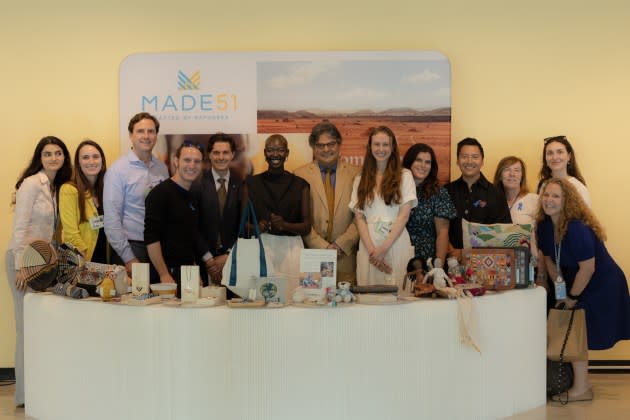CFDA Nest and UNHCR Aim to Empower Refugee Artisans With New Program

The Council of Fashion Designers of America, Nest, a global nonprofit advocating for artisan handworkers worldwide and the United Nations High Commissioner for Refugees, or UNHCR, have joined forces to launch a refugee artisan accelerator, which will support six trailblazing social enterprises that employ refugee artisans. The program is designed to incubate businesses that help refugees build sustainable livelihoods while offering designers an opportunity to incorporate sustainability and ethical production into collections.
Rebecca van Bergen, founder and executive director of Nest, explained the significance of refugee craft in the current global context: “With global disbursement on the rise, there is a huge increase in refugees around the world. By partnering with CFDA and UNHCR to support refugees who have unique skills, it helps not only build livelihoods, but also bring awareness around these issues. For displaced people, craft can be vital to survival. First, it is something you can carry with you. It is a celebration of their heritage, but with many crafts like beading and embroidery, the repetitive motion can also trigger calming brain chemistry like meditation,” said van Bergen.
More from WWD
Made 51, a global initiative launched by the U.N. Refugee Agency, is a key partner in this program helping to identify refugee partner organizations. Six social enterprises from around the world have been selected to participate in the program: Indigo Africa, which works with refugees from Burundi and DR Congo; Bebemoss, representing Syrian refugees; Artisan Links, working with Afghan refugees; Roots working with Sudanese refugees; Weave representing refugees from Myanmar, and Xoomba from West Africa. The businesses will receive six months of customized business development and market access support, culminating in a virtual showcase where the refugee artisan businesses will be presented to CFDA members.
Steven Kolb, chief executive officer of CFDA, emphasized the program’s importance as a tool for designers to expand their businesses. “This program offers our members a chance to see different crafts, people, artisans and types of production that could be incorporated into their brands, distinguishing them or positioning their product in a way that ultimately resonates with the customer.”
Kolb noted the changing landscape of the fashion industry: “When you look at what young brands and creatives are doing, their business model isn’t just about what they are making and selling, but they are considering what impact they are having. In working with designers, we see that to them there is no business unless they have social enterprise as part of it.”
Van Bergen underscored the mutual benefits of these collaborations. “The collaboration between designers and artisans will not just result in great capsule collections, but we hope will also help these artisans skill up and better prepare for markets. Who better to learn from than designers who have had to master those skills themselves.”
She highlighted the diversity of skills within the cohort, saying they can be used in many ways. “CFDA has such a broad network of incredible talent and the skills of the refugee communities are not singular. We have six different craft types that we are featuring that CFDA members can work with.”
As part of the program, Nest will facilitate a capsule collection with at least one designer to help elevate and amplify the social impact of the participating businesses. The program follows an ambitious timeline, with business development support beginning this fall, followed by product development and production for a design collaboration in winter and spring 2025, respectively. The launch of the design collaboration is scheduled for World Refugee Day in summer 2025.
Van Bergen concluded with a hopeful message. “Everything is heated now. These topics can feel heavy, but fashion and craft have the ability to be a great equalizer, crossing cultures, race, gender. It can be a unifier. We hope craft can help bring people to celebrate rather than divide. We want to help the artisans develop marketable skills that would yield great returns for them.”
Best of WWD
Stronger Together: Future of Italy’s Textile Supply Chain Sits in Collaboration
Physicality and Natural Materials Key to Première Vision Visitors
Textile Color Trends for Spring 2022 Nod to Life After Lockdown
Sign up for WWD's Newsletter. For the latest news, follow us on Facebook, Twitter, and Instagram.

